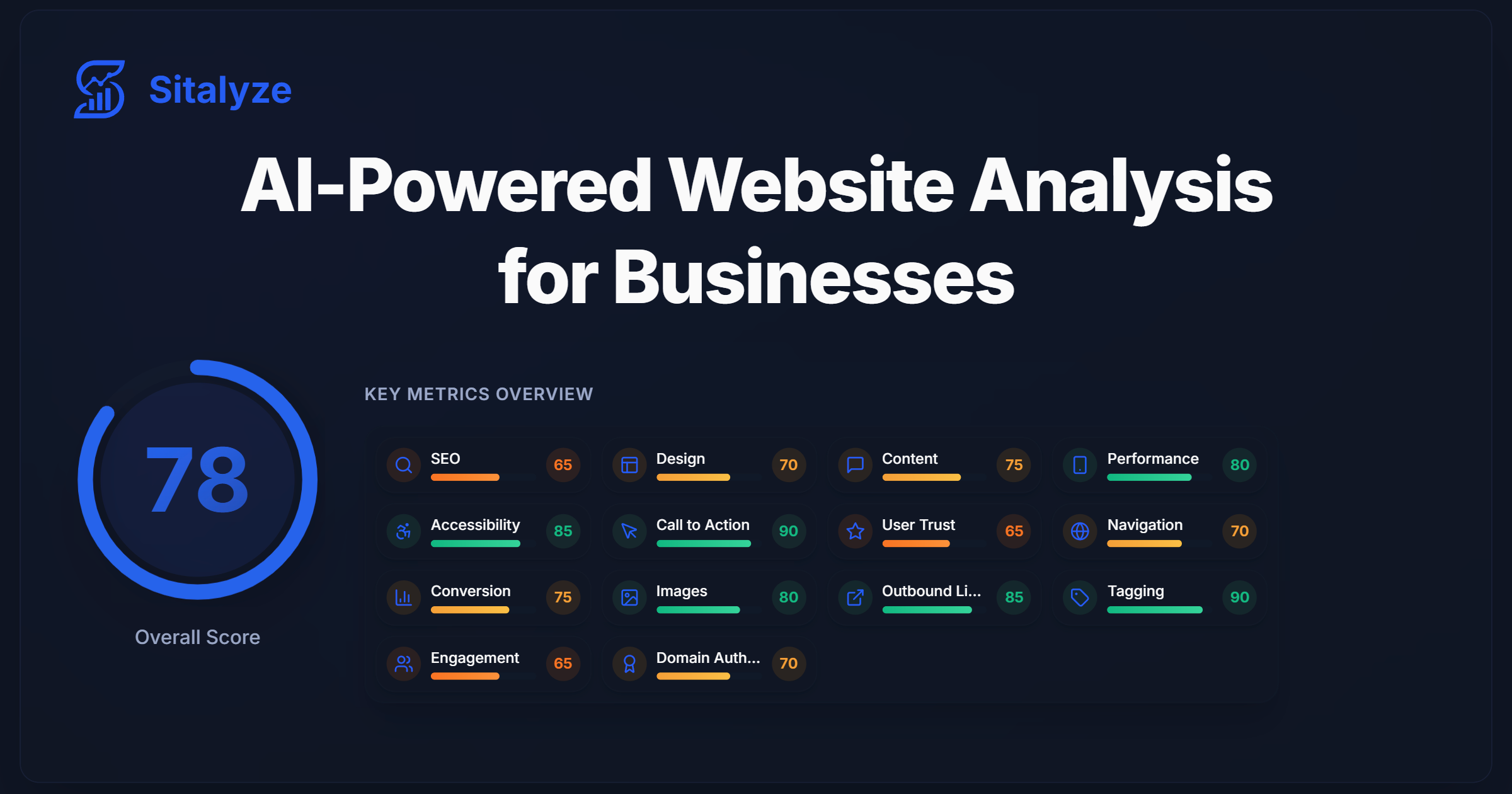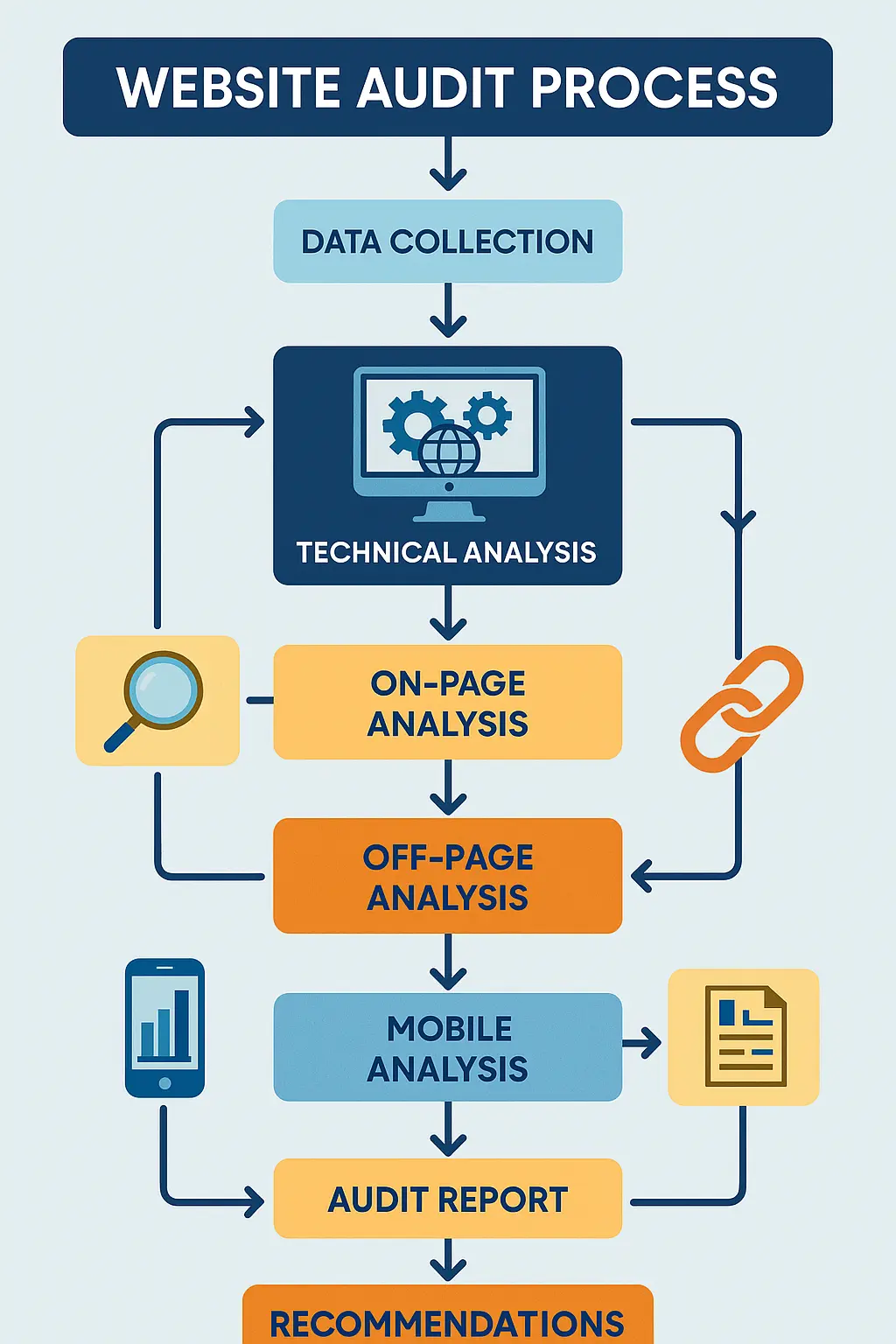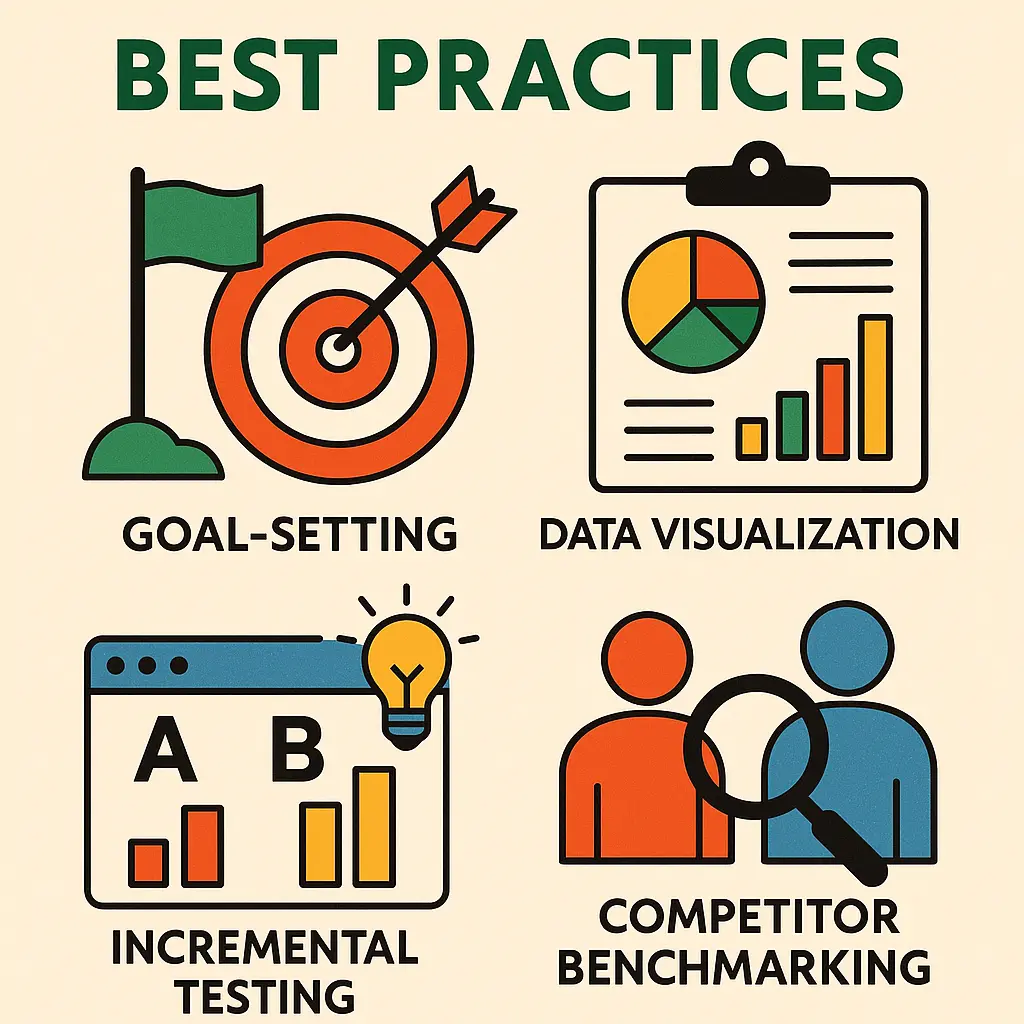
How to Conduct a Complete Website Audit (Step-by-Step Guide)
Unlock the secrets to a high-performing website in a few steps and learn how to do a detailed website audit.
Have you ever wondered why some websites effortlessly attract and retain visitors while others fall short? In the ever-evolving digital landscape, understanding your website's performance is key to staying ahead of the competition. A thorough website audit not only reveals hidden issues affecting your site's health but also uncovers opportunities for optimization that can dramatically enhance user experience and conversion rates.
In this guide, you'll discover a step-by-step process to evaluate every critical aspect of your website—from SEO and speed to user engagement and conversion funnel efficiency. We'll walk you through the essential metrics to monitor and provide insights into interpreting these numbers, empowering you to make data-driven decisions that propel your online presence forward.

Understanding the Digital Landscape and the Need for Audits
In today’s fast-paced digital world, the performance of your website isn’t just about having an attractive design—it’s about creating an experience that drives engagement, builds trust, and converts visitors into loyal customers. Every business, whether large or small, faces a myriad of challenges: from fluctuating search engine rankings to slow load times and hidden technical errors that quietly erode user satisfaction. The problem is not always obvious at first glance; issues are often buried beneath layers of code and design, making it nearly impossible to spot without a systematic approach.
This is where a comprehensive website audit becomes indispensable. An audit goes beyond surface-level observations; it uncovers the intricate details that can either make or break your online success. For example, a single overlooked SEO misstep or a minor performance bottleneck can lead to significant drops in site traffic and conversion rates. Understanding these nuances is crucial because every element on your website—from the clarity of your call-to-action buttons to the structure of your content—plays a role in your overall digital strategy.
Moreover, the importance of this topic is amplified by the increasing competition in the digital space. As more businesses move online, the difference between a well-optimized website and one that’s plagued by inefficiencies becomes ever starker. By recognizing these challenges early, you not only improve your site’s performance but also enhance the user experience, build trust with your audience, and ultimately, stay ahead of competitors. Tools like Sitalyze are designed to simplify this process by providing detailed, 30-page reports that score over 50 metrics—covering SEO, performance, conversion funnels, and more—to give you actionable insights that drive real results.
The context of today’s digital ecosystem demands more than just periodic checks; it requires continuous monitoring and in-depth analysis. A robust audit framework doesn’t merely identify problems—it acts as a catalyst for growth by pinpointing areas for improvement and providing a roadmap to optimize every aspect of your online presence. This proactive approach is what differentiates thriving businesses from those that struggle to keep pace with industry trends and technological advancements.
A Step-by-Step Journey Through the Website Audit Process
Embarking on a full website audit might seem daunting at first, but breaking it down into manageable steps transforms it into a structured and insightful process. At its core, the audit is about understanding the critical metrics that determine your site’s health. Let’s explore the key concepts and methodology that form the backbone of a complete website audit.
Identifying Key Metrics and Critical Insights
The first step is to pinpoint the metrics that matter most. These include SEO rankings, page load speeds, mobile responsiveness, user engagement levels, security vulnerabilities, and much more. Each metric is scored on a scale, often out of 100, allowing you to quickly gauge which areas are excelling and which need urgent attention. For instance, a site that scores 80 on SEO but only 50 on performance indicates a clear direction for optimization efforts.
As you gather data, it’s essential to leverage visual aids such as charts, graphs, and flowcharts. These visuals not only make complex data more digestible but also help in quickly identifying trends and anomalies. Imagine a dashboard that displays everything from bounce rates to conversion funnel leakages; this comprehensive snapshot is what enables businesses to make informed decisions at a glance.

Unpacking the Audit Process: From Data to Actionable Insights
Once you’ve identified the critical metrics, the next phase is to dive into a detailed analysis. This involves:
- Data Collection: Aggregating data from various sources such as analytics tools, search console reports, and performance testing tools.
- Evaluation: Interpreting the collected data to understand how each metric impacts the overall user experience and business objectives.
- Prioritization: Ranking issues based on their severity and potential impact. Not every error has the same weight; a minor typo in your meta description is far less critical than a broken conversion funnel.
- Action Plan: Developing a strategic roadmap that includes specific, actionable recommendations. Whether it’s optimizing page speed, restructuring your site’s navigation, or enhancing mobile usability, each step is targeted at driving measurable improvement.
A significant advantage of using an AI-powered tool like Sitalyze is its ability to automate much of this process. Sitalyze analyzes over 50 metrics and generates a comprehensive 30-page report, complete with scores and personalized recommendations. This not only saves time but also ensures that no critical detail is overlooked, giving you the confidence to take decisive action based on reliable data.
This step-by-step breakdown serves as a roadmap for any business owner or digital marketer. Whether you’re performing a routine check-up or a deep dive into your site’s architecture, understanding each phase of the audit process is the key to unlocking long-term digital success. From initial data collection to final implementation of recommended improvements, every stage is a building block towards creating a robust, high-performing website.
Transforming Insights into Success: Real-World Applications
Imagine a mid-sized e-commerce store that faced a steady decline in traffic and diminishing conversion rates despite regular marketing efforts. By undertaking a comprehensive website audit with the help of Sitalyze, the business uncovered underlying issues—from sluggish page load speeds and ineffective mobile responsiveness to hidden technical errors affecting SEO performance. Post-audit, the store implemented targeted recommendations and, within a few months, saw a 25% surge in traffic and a notable 15% boost in conversions. This success story illustrates that a deep dive into your website’s performance can uncover actionable insights that drive significant improvements.
The detailed audit report scored over 50 metrics, providing an at-a-glance overview of strengths and weaknesses. Every aspect, from on-page SEO and security to conversion funnel efficiency, was broken down into clear, understandable data points. This enabled the team to prioritize changes that would yield the highest returns. For instance, by resolving a series of technical glitches flagged during the audit, the store experienced a leap in search engine rankings, thereby attracting more organic visitors.
Moreover, another service-based business used a similar approach to bolster its local market presence. Before the audit, the business struggled with low visibility and fierce local competition. The audit revealed key areas for improvement, such as mobile optimization, local SEO enhancements, and content relevancy. With a well-defined action plan, the business restructured its online strategy, resulting in higher local search rankings and a measurable increase in customer inquiries. These examples highlight how a meticulous website audit can serve as a turning point, transforming data into a strategic roadmap for growth.
Practical Strategies and Best Practices for an Effective Audit
While a comprehensive audit lays the groundwork for digital success, its true value is unlocked through thoughtful implementation. Here are some practical strategies and best practices to help ensure your website audit drives meaningful improvements:
- Define Clear Objectives: Begin by identifying the primary goals of your audit. Whether you aim to improve SEO, enhance user experience, or optimize conversion rates, clear objectives will guide your focus and help in prioritizing actions.
- Adopt a Regular Audit Schedule: One audit is just a snapshot in time. Regularly reviewing your website ensures that you stay updated on emerging issues and evolving trends. Establishing a recurring audit routine helps in tracking progress and maintaining optimal performance.
- Prioritize Based on Impact: Not every issue identified requires immediate action. Utilize the scoring system to pinpoint high-impact areas that could significantly boost performance. Addressing these first ensures that your efforts are directed where they matter most.
- Leverage Visual Data: Incorporate charts, graphs, and heatmaps to simplify complex metrics. Visual aids make it easier to identify patterns, spot trends, and communicate findings to stakeholders. They transform raw data into an accessible narrative that drives decision-making.
- Implement Incrementally: When rolling out improvements, test changes one at a time. This measured approach allows you to assess the impact of each modification and minimizes the risk of unintended side effects.
- Benchmark Against Competitors: Use your audit findings to compare your website’s performance against industry standards and competitors. This benchmarking can reveal gaps in your strategy and inspire innovative improvements to differentiate your brand.
- Document the Process: Maintain detailed records of each audit, including data collected, changes made, and subsequent performance improvements. This documentation becomes a valuable reference for future audits and long-term strategic planning.
- Balance Automation with Expertise: While AI-powered tools like Sitalyze deliver comprehensive insights and actionable recommendations, human expertise is crucial for interpreting the data contextually. Combining automated data analysis with expert judgment can lead to more nuanced and effective strategies.

By following these strategies, you not only streamline the audit process but also ensure that each optimization is both data-driven and strategically sound. Whether you’re tackling minor tweaks or undertaking a full-scale overhaul, these best practices will help you harness the full potential of your website audit to drive lasting digital success.
Wrapping Up Your Website Audit Journey
After exploring the intricacies of a comprehensive website audit, it’s clear that understanding your digital landscape is not a one-time task but an ongoing commitment to excellence. We began by discussing the importance of a thorough evaluation—from identifying critical metrics to turning data into actionable insights. We delved into real-world case studies that demonstrated how targeted optimizations can dramatically enhance website performance and conversion rates. Additionally, practical strategies and best practices were shared to ensure that every aspect of your site, from SEO to user experience, receives the attention it deserves.
Reflecting on these insights, it becomes evident that a successful website audit is more than a checklist—it’s a strategic blueprint for long-term growth. As the digital arena grows ever more competitive, leveraging the power of detailed analytics and automated tools like Sitalyze can make all the difference. By continuously monitoring and optimizing your site, you not only enhance user engagement and search rankings but also build a resilient online presence.
Embrace this audit framework as a continuous process that evolves with your business. Whether you’re a seasoned digital marketer or just starting out, taking the time to meticulously evaluate and refine your website will yield lasting dividends in performance and profitability.
Ready to transform your website? Experience the future of website analysis with Sitalyze. Try it today, share your success stories, and subscribe for more expert insights on elevating your digital presence.